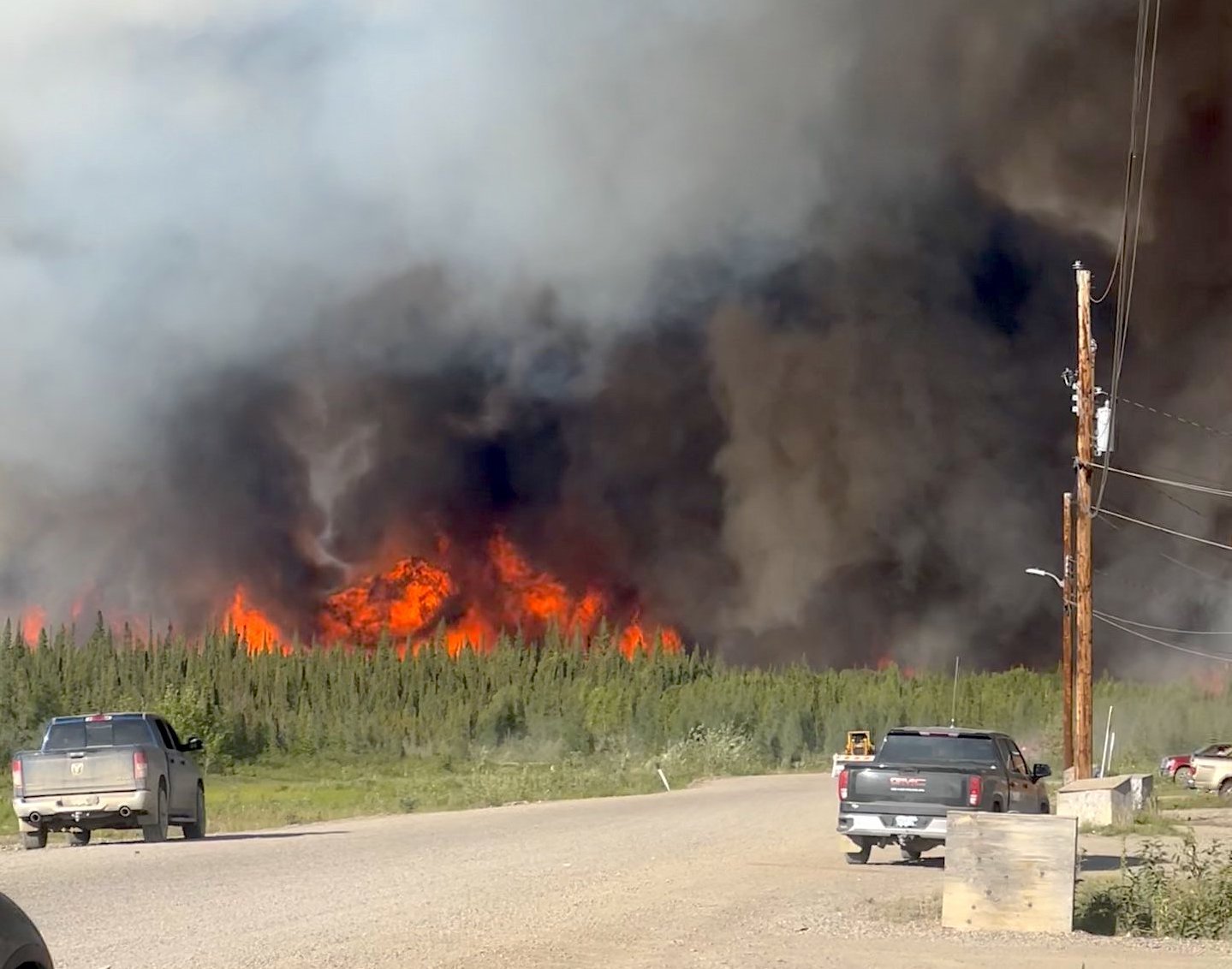By Bynatasha Bulowski Rochelle Baker
Some community members had recently completed basic wildfire training from Yukon First Nations Wildfire, an organization working to deepen and develop Indigenous firefighting capacity in the north, Masuzumi said. The team rounded up water trucks and other heavy equipment and started putting firebreaks in place to protect the community.
While most residents were transported to nearby communities, the Guardian crew also evacuated almost 100 residents and cared for them at a fish camp across the river that they’d been setting up for an elders and youth cultural exchange.
It was round-the-clock work in difficult conditions, Masuzumi said.
“It was a really busy, really overwhelming two days of fighting the fire.”
While buildings in the community were saved from the blaze — sparked by an unattended campfire — the wildfire burned for three weeks, preventing residents’ return and scorching more than 8,200 hectares of land before people were given the all clear to return July 6.
The wildfire underscored the value of Guardian involvement in a community-led response, Masuzumi said. He added the K’ahsho Got’ine Guardians could do more if they were funded year-round — not just for their environmental monitoring, but as wildfire stewards who work in cooler months to prevent, reduce the intensity and frequency of blazes, and lead recovery and restoration efforts in their territory after climate disasters.
Cultural burning curbs catastrophic fires
The longstanding process of extinguishing all fires, instead of letting them burn naturally, has led to the build-up of dead wood and brush, increasing the severity of fires when they occur, said Indigenous fire stewardship expert Amy Cardinal Christianson.
Replanting after logging with a single species of tree that is often more combustible has also fuelled the intensity of fires, said Christianson, also a policy expert with the Indigenous Leadership Initiative (ILI).
However, cultural burning, an Indigenous practice of setting selective fires in wet, cooler seasons, helps reduce catastrophic fires and protect important natural areas.
“Indigenous people have been living on the Canadian landscape for millennia in forests that need fire,” she said.
However, traditional fire stewardship isn’t well-supported by government policies or funding, Christianson said.
“In some seasons, hundreds of millions or even billions of dollars go into fighting wildfires, but little actually goes into prevention or mitigation,” Christianson said.
“We see having Guardians as a really cost-effective way to employ people on the land in a way that achieves big benefits.”
Australia is leading the way by including traditional fire stewardship as part of their Indigenous Ranger program, she said.
“Indigenous people [in Canada] have really demonstrated they want to be more involved in decision-making about fire in their territories,” Christianson said.
It’s imperative that fire management is included in the K’ahsho Got’ine land-use plan being developed for the new Ts’udé Nilįné Tuyeta conservation area, Masuzumi said. But sourcing the money from territorial or federal governments or conservation agreements — by applying for time-consuming, short-term grants — is always an issue.
“We always have to scratch our heads and figure out where the funding is going to come from,” he said.
Wildfire training and certification is also controlled by outside agencies not typically geared to Indigenous communities’ needs or aligned with their values, Christianson said. For example, the firefighting course the K’ahsho Got’ine took wasn’t recognized at the time the wildfire threatened their community.
Fire sovereignty
Provinces and territories control who is a certified firefighter, and there’s a growing push from Guardians and nations that want to develop training and firefighting objects suited to their needs, Christianson added.
Standard wildfire suppression prioritizes human life and buildings and infrastructure while leaving wildfire to tear across open landscapes. However, all Indigenous communities have natural areas vital to their well-being that need to be included in fire management, Masuzumi said.
“When we have fires out in our territory — just like in every other First Nations territory — we all have burial sites or traditional areas where we go,” he said.
“We always try to protect those areas because those are sacred to us.”
Water is also part of the equation, said Masuzumi, who has taken samples from important lakes in his territory for over a decade.
“The water that’s from a lake that’s got burnt trees … is not the same,” he said. “It takes a long time for water to turn back to its normal state.”
“Our elders say we have to fight the fire around lakes because the fish are going to die. So, the government doesn’t understand those kinds of things, right? They look at it from a different perspective.”
There’s increasing public conversation about Indigenous fire stewardship after the recent string of savage wildfire seasons, but that hasn’t resulted in concrete changes on the ground, Christianson said.
Long-term sustainable funding for Guardians to manage wildfire concerns, Indigenous-focused fire training, or the protection of culturally important areas when fighting fires isn’t taking place, Christianson said.
“We’re seeing a lot of talk, but not action in the way that we want, which is recognizing Indigenous sovereignty to the land and to fire management in our territories, and being able to make important choices,” she said.
Masuzumi agreed.
“Our job as guardians is to make sure we’re going to take care of the environment,” he said.
“We have the training to prevent [wildfires] from getting worse. We have to be the first line of action.”
Rochelle Baker / Local Journalism Initiative / Canada’s National Observer
